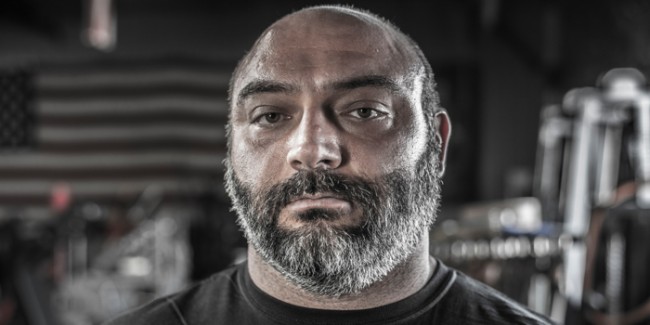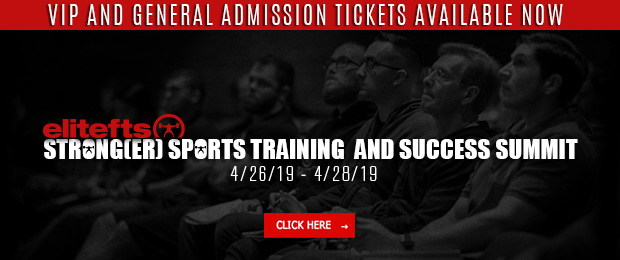
If you are going to coach a room full of athletes, you have to have a certain level of energy and a certain presence. You better bring the juice. This cannot be denied. The problem comes when all you have is juice. Yes, you have to bring energy and motivation, but you also have to TEACH and help athletes figure out problems.
In order to fully help your athletes maximize their performance and decrease injury, you HAVE to be able to communicate to them how to do the lifts properly. Your cueing has to help them lift in a more efficient and effective manner. This may seem like Coaching 101 and a huge overstatement of the obvious, but this is quickly taking a back seat to being hype AF.
Bringing the juice is a slippery slope. The line between athletes being jacked up in the weight room and your session turning into a frat party is a thin one, and it’s being crossed more and more. Go on YouTube and see for yourself. I’m not against athletes bringing energy; the issue arises when it takes away from the top priorities of the room: athlete safety and improving performance.
The purpose of this article is not to be a wet blanket, ‘cause I know that’s what 50 percent of you are thinking right now; it’s to help with your cueing and getting your athletes in the right position on some of their lifts. Also, to quote JP Carroll, “IDGAF” what you think; I’m right.
Some of the big themes in the industry right now are proper neuromuscular firing patterns and dynamic correspondence to the field/court. While both of these are a thing, a lot of people are getting distracted by these buzzwords and making the process of maximizing performance way too complicated. The majority of the time, if you can teach your athletes to perform the lifts correctly and teach them to have the right intent into the bar, you can kill a flock of birds with one stone.
So much juice. Please take note of all the crazy intense yelling and screaming taking place during this squat with 835 top end weight (735 bar weight, 100 pounds of band tension)!
"The greatest athletes in the world are able to go from parasympathetic to sympathetic dominance at the drop of a hat." - Buddy Morris
Translation: They can go from 0 to 60 very easily. You can't be constantly cranked up or you will have nothing to draw from when you actually have to get cranked up!
The Right Intent — Kill the Bar
Some will say you have to teach the movement first before you can have the athlete learn to accelerate a weight or be explosive. I have found you can do this simultaneously. The dynamic effort method, or speed work, has been a great tool that has allowed me to do this. Again, you would think this would go without mention, but why can you go on Instagram and see athletes squatting, and it looks like old people fu— er, enjoying each other’s company?!
We wanna talk about juice and intensity, yet when our athletes push on the bar, the effort into the bar is juiceless. Athletes have to have a violent intent on each rep (on their main lifts, not so much accessory movements). Some will say “Well, you’re either explosive or you’re not.” This is true to an extent. I understand as a coach you can only bring up speed so much, but any athlete can learn to move a submaximal load with some juice. When you get an athlete who can then later start moving heavy loads with speed, then you’ve got someone who’s hard to deal with on game day… no matter what the sport.
The easiest cue to get the bar to move fast is “fast.” Simple enough, the issue is, the athlete may not be slow because the intent to move fast is not there. There are many times you have to fix a technical issue so they can move it fast. This is why it’s imperative you know how to coach both technique and intent. Below are some simple cues for squat, bench, deadlift and any of their variants. Your cues are also your indicators of what to watch for as a coach.
Correct Cueing: So Your Athletes Can Get Hyped on Proper Firing Patterns
Box Squat
1. As the athlete is setting up, remind them almost every time:
- “Set your feet.”
- “Chin up.”
- “Fill your belly.”
2. As they start their descent:
- “Stomach out.”
- “Knees out.”
3. Right before they stand up:
- “Drive your shoulders.”
- “Head back.”
The ascent has to be fast/explosive, violent, or however you want to describe it. When you stand up with the bar, it cannot be soft. Getting your kids to understand and do this is a huge component of your athletes becoming explosive.
Bench
Cueing for the Bench Press
1. Taking the bar out:
- “Big breath in.”
- “Stomach up / squeeze your back.”
2. Lowering the bar:
- “Elbows first.”
- “Stomach up.”
3. Pressing the bar:
- “Punch your hands or press fast.”
- “Squeeze your hands.”
4. If the bar starts too slow:
- “Squeeze your hands.”
- “Break the bar.”
Sumo Deadlift
Cueing for the pull
1. Setting up:
- “Push out on your feet.”
- “Fill your belly.”
2. Getting to the bar:
- “Flare your knees.”
- “Chin/ chest up.”
3. Standing up with the bar:
- “Push out / pull back.”
- If hips are raising before shoulders: “Pull back sooner.”
- For kids that tend to Romanian deadlift the weight up: “Squat up and pull back.”
Conventional Deadlift Variations
Cueing for the pull
1. Setting up:
- “Set your feet.”
- “Fill your belly.”
2. Getting to the bar:
- “Squat to the bar.”
- “Butt back knees out.”
- “Chin / chest up.”
3. Standing up with the bar:
- “Squat up / pull back.”
- If hips are raising before shoulders: “Pull back sooner.”
- For kids that tend to “Romanian Deadlift” the weight up: “Squat up and pull back.”
This short list will get you started on being a better technical coach and helping your athletes. These are the cues that I found to work best over the course of 10 years of collegiate coaching with thousands of athletes, but that doesn’t mean that variations won’t work with your population.
Use these as your standards for movement so you can then coach the athletes into the right positions and techniques. Once you have this down, THEN start worrying about bringing your juice or Gatorade or whatever the hell it is you wanna call it.
I prefer to call it coaching.










